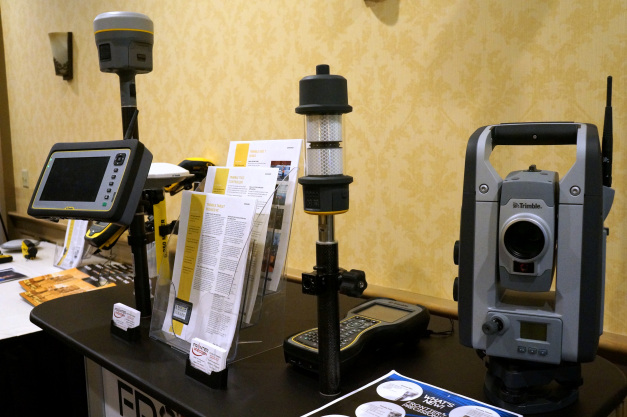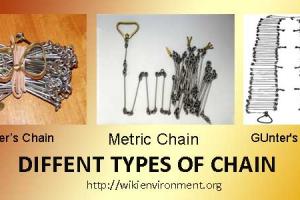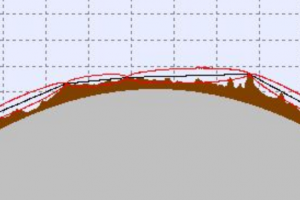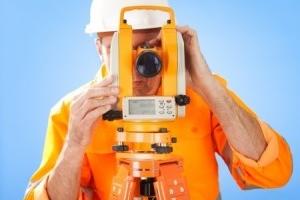Maintenance of Surveying Equipment - Routine Care and Transportation

Surveying equipment is being used under most stressful conditions. The equipment is exposed to extreme weather conditions, used in dusty construction areas and is subject to bumpy transportation. Proper care in the method by which equipment is used, stored, transported, and adjusted is a major factor in the successful completion of the survey. Lack of good maintenance practices not only causes unjustified replacement costs, but also can serious the efficiency and accuracy of the entire survey.
Also See: Levelling Survey
General Care and Maintenance of Surveying Equipment and Tools
Surveying instruments, which include theodolites, levels, total stations, electronic measuring devices, and GPS receivers, are designed and constructed to provide years of reliable use. The shafts, spindles, pendulums, and electronics of precision instruments, although constructed for rugged field conditions, can be damaged by one careless act, or continued negation prescribed procedures for use, care, and adjustment of the instrument.
Each new instrument is furnished with an operator’s manual. The manual contains a description of the instrument, specifications of its various components and capabilities, and applications. The manual also contains basic instructions for use of the instrument and describes recommended servicing and adjusting methods. The operator’s manual should be kept with the instrument at all times. Each operator should thoroughly study the manual prior to use of he instrument, particularly whenever prescribed field adjustments are to be made. If the manual is lost, stolen, or damaged beyond use, a replacement copy should be obtained as soon as practicable.
The following general principles of care and servicing should be applied as a routine matter for all survey equipment and supplies.
-
All equipment and tools should be kept as clean and dry as practicable, particularly if they are to be transported or stored for any length of time.
-
Wooden surfaces should be wiped clean of caked mud or moisture prior to returning the equipment to the vehicle. The original painted or varnished surfaces should be repaired as often as needed to keep moisture from entering the wood.
-
Metal surfaces should be cleaned and wiped as dry as practicable. A coat of light oil should be applied to tapes and the metal parts of tools to prevent rusting during storage. Excess oil should be wiped off.
Routine Care of Surveying Instruments.
-
Before making the first set up of the day, visually inspect the instrument for cracks, bumps, and dents. Check the machined surfaces and the polished faces of the lenses and mirrors. Try the clamps and motions for smooth operation (absence of binding or gritty sound).
-
Frequently clean the instrument externally. Any accumulation of dirt and dust can scratch the machined or polished surface and cause friction or sticking in the motions.
-
Dirt and dust should be removed only with a clean soft cloth or with a camel hair brush.
-
Non-optical parts may be cleaned with a soft cloth or clean chamois.
-
Clean the external surfaces of lenses with a fine lens brush and , if necessary, use a dry lens tissue. Do not use silicon treated tissues, as they can damage the coated optics. It is permissible to breath on the lens before wiping it, but liquids, such as oil, benzene, water, etc., should never be used for cleaning purposes. DO NOT loosens or attempt to clean the internal surface of any lens.
-
Cover an instrument whenever it is uncased and not being used for any length of time, particularly if there is dust or moisture in the air. After an instrument has been used in damp or extremely cold situation, special precautions must be taken to prevent condensation of moisture inside of the instrument. When working with the instrument in cold weather, it should be left in the carrying case in the vehicle overnight. If stored in a heated room overnight, the instrument must be removed from the carrying case. If the instrument is wet or frost covered it should be remove it from its case, and leave it at room temperature to dry out.
3. Care in Transporting Surveying Equipment.
Vehicular Transport
-
The major damage to equipment and tools occurs when they are being placed into or taken out of the survey vehicle. Other damage occurs during transport, when equipments is jostled against other tools or equipment. Compartments (lined with carpeting, when possible) should be provided to keep equipment and supplies separated. This not only keeps the equipment from being damaged, it facilitates finding such items more rapidly. Heavier items should be carried in the lower parts of vehicles and they should never be in direct contact with other tools or equipment below them.
-
The care, organization, and general housekeeping of a vehicle are good indications of the attitude of the entire survey crew. Keep passenger compartments free of unnecessary clutter and equipment. Any equipment or material carried in the passenger compartment should be firmly secured.
-
Transport and store instrument in positions that are consistent with the carrying case design. Many instrument cases indicate the position in which they should be transported. Treat optical targets, prisms, and staffs with the same consideration.
-
Transport the instruments in their carrying cases placed in a compartment cushioned with firm poly foam or similar material to protect them from jolting or excessive vibrations.
-
Remember, loose equipment, out of place tools, and general clutter not only contributes to damage of the items, they also waste crew time in locating them and are a safety hazard.
Casing and Uncasing
Before removing an instrument, study the way it is placed and secured in the case. The instrument must be replaced in the same position when returned to the case. In removing the instrument from the case, carefully grip it with both hands, but do not grip the vertical circle standard or where pressure will be exerted on tubular or circular level vials.
Field Transport of Surveying Instrument
Do not “shoulder” or carry a tripod mounted theodolite or electronic distance measuring equipment (EDM). These instruments should always be removed from the tripod and secured in their carrying cases when moved.
These precautions are necessary because the center spindle (center spigot or standing axis) of a theodolite is hollow and relatively short. When carried horizontally while on the tripod, the alidade’s weight is an excessive load for the hollow centerpiece to bear. Instrument damage can result if the above precautions are ignored. Also, the instrument fastener can break, causing the theodolite to fall.
4. Care During Instrument Setups
- Whenever possible, select instrument stations where operation is not dangerous to the instrument operator, the crew, or the instrument. Select stable ground for the tripod feet. Do not set an instrument closely in front of, or behind, a vehicle or equipment which is likely to move. Take a safe route to all setups.
- At the site, firmly plant the tripod with its legs widespread. Push along the legs, not vertically, downward. On smooth surfaces, use some type of tripod leg restrainer to keep the legs from sliding outward.
- Always have the tripod firmly set over the point before removing the instrument from its carrying case. Immediately secure the instrument to the tripod with the instrument fastener.
- Never leave an instrument or its tribrach on the tripod without securing either to the tripod. Moderate pressure on the fastener screw is sufficient. Excessive tightening causes undue pressure on the foot screws and on the tribrach spring plate. Make sure the tribrach clamp is in the lock position.
5. Adjustments of Surveying Instruments.
Field Adjustments
The crew leader should develop a set of test procedure to be used frequently for elimination of gross errors. Such tests should include a check of items such as the level, optical plummet, and tripod. In the field, adjustments should only be made when the instrument results are poor or require excessive manipulation.
Normally, each instrument should be periodically checked at a facility where the best conditions for testing are possible. Only the adjustments described in the manual for the instrument should be made in the field or shop. Do not “field strip” (dismantle) instruments.
Major Adjustments
When an instrument has been damaged or otherwise requires major adjustments, it will need to be sent to an authorized repair shop. The instrument should be accompanied by a written statement indicating the types of repairs needed. In the case of electronic devices, the request should describe conditions under which the instrument does not function properly, i.e. coldness, dampness, etc. if a “loaner” is needed, this should also be indicated.
6. Care of Tools
- Improperly maintained tools can be a source of annoyance, as well as being a safety hazard. Each employee is responsible for keeping his or her tools and equipment in good condition. To prevent loss of small equipment and tools, avoid laying them on the ground, on vehicles, or on equipment which might be moved. When not in use, carry them in scabbards and pouches.
- Repair or replace any driving tool that is burred or fractured on any part of the striking or driving face. Many surveyors have been injured by the “shrapnel” effect from gads and sledges which had ragged edges. The same is true for “bull points” or other tool which are driven.
- Crooked or warped handles can cause injury as well as mistitling and damage to the tool. Promptly replace such handles and those that are cracked or broken. Handles should be firmly secured in all cutting and driving tools.
7. Care of Theodolites and Total Stations
-
Although the instruments are ruggedly built, careless or rough use and unnecessary exposure to the elements can seriously damage them. If handled reasonably, they will provide consistently good result with a minimum of downtime for repair or adjustment. Some general guidelines for the care of instruments are:
-
Lifting – instruments should be removed from the case with both hands, gripping the micrometer knob standard and base on the older instruments. Newer instruments are equipped with a carrying handle; the other hand should support the base. One hand should continually support the instrument until the tribrach lock is engaged and the tripod fixing screw secured.
-
Carrying Tripod - In most cases, the instrument should be removed and re-cased for transportation to a new point. If the point is nearby, the instrument should be carried in the vertical position (tripod legs pointing straight down). An instrument should never be “shouldered” or carried horizontally.
-
Adjusting collimation – The collimation error of theodolites and total stations is determined by following the procedure outlined in the users’ manual. If the collimation error is found to be consistently in excess of ten seconds on the horizontal and twenty seconds on the vertical, the instrument should be adjusted. The collimation adjustment should be made in the field only by a specially trained individual. Otherwise, the instrument should be returned to an authorized repair shop.
8. Care of EDM Devices
-
EDMs are designed, contracted and tested to withstand normal field conditions. They are however, precision instruments and should be handled with the same degree of care required for other types of precision survey equipment.
-
Secure EDM in vehicles in padded compartments with substantial the downs so movement and jarring are minimized. Cushion with firm polyfoam or similar material. Do not use soft foam rubber. The instruments should be stored and transported in the position indicated on the case.
-
Required maintenance of most EDMs is minimal. However, protection from the elements and routine external cleaning is necessary.
-
NEVER point an EDM directly at the sun. The focused rays of the sun can damage sensitive internal parts.
-
Protect EDMs from excessive heat. Heat can cause erratic readings and deterioration of components. Do not leave instruments in closed vehicles that are parked in the sun. Avoid rapid changing temperature, particularly from extreme cold to warm, which can cause condensation in the internal parts of the instruments. Condensation can normally be avoided by leaving the instrument in its carrying case for at least 10 minutes and then opening the case to allow any trapped moisture to evaporate. An instrument taken from a warm office or vehicle to an extremely cold operating environment may require some time to adjust itself. The same type of precautions should be taken to let the instrument cool off slowly.
-
Although EDM instruments are water resistant and well shielded, keep them as dry as practicable. The case should be opened and the instrument allowed to dry in a warm dry room when not in sue.
-
Frequent partial discharge and charge of batteries could cause the battery to lose its ability to hold power. Periodically, batteries should be discharged completely and then recharged overnight, or for the specified charge time. Effective usage of batteries will also decrease at low temperatures. An EDM in the tracking mode position will discharge the battery will also decrease at low temperatures. An EDM in the tracking mode position will discharge the battery quite rapidly, so it is important to be able to charge batteries to their maximum capacity. In general, one should follow the user’s manual instructions on how to maintain the batteries for top performance. If the batteries still fail to hold power, they should be re-celled or replaced.
9. Care of Tapes
Routine care extends tape life. The following are basic guidelines for the care of tapes:
-
Do not place a tape where it can be stepped on or run over, unless the tape is flat, taut, and fully supported on a smooth surface. Keep the tape straight when is used. When pulling a slack tape, a loop can develop into a kink and easily break the tape. Avoid pulling a tape around poles or other object, as a hard pull can stretch or break the tape.
-
Do not wind tapes overly tight on their reels, as it can cause unwanted stresses and lead to stretching of the tape.
-
After the day’s work, clean tapes that are soiled. In wet weather, dry before storing. Clean rusty tapes with fine steel wool and cleaning solvent or kerosene. Use soap and water when tape is dirty or muddy. To prevent rust after cleaning, oil lightly and then dry the tape.
-
Avoid storing in damp places.
10. Care of Tribrachs
Tribrachs are an integral part of the precision equipment and should be handled according. They should be transported in separate compartments or other containers to prevent damage to the base surface, bulls eye level, and optical plummet eye piece. Over tightening of the tripod fastener screw can put undue pressure on the leveling plate.
11. Care of Tripods
A stable tripod is required for precision in measuring angles. A tripod should not have any loose joints or parts which might cause instability. Some suggestions for proper tripod care are:
- Maintain firm snugness in all metal fittings, but never tighten them to the point where they will unduly compress or injure the wood, strip threads or twist off bolts or screws.
- Tighten leg hinges only enough for each leg to just sustain its own weight when legs are spread out in their normal working position.
- Keep metal tripod shoes tight and free of dirt.
- Keep wooden parts of tripods well painted or varnished to reduce moisture absorption and swelling or drying out and shrinking.
- Replace top caps on tripods when not in use.
12. Care of Levels
Review the previously stated guidelines for the care of instruments. These guidelines are also generally true for the proper care of pendulum levels. Additional guidelines are:
- Do not spin or bounce pendulum levels, as such movement can damage the compensator.
- Protect the level from dust. Dust or foreign matter inside the scope can cause the compensator’s damping device to hang-up.
- Frequently check the adjustment of the bull’s eye bubble. Adjust the bull’s eye to the center, not almost to the center. Make certain it is adjusted along the line of sight and transversely as well. Proper adjustment reduces the possibility of compensator hang up.
- To check for compensator hang up, slightly tap the telescope with a pencil or operate the fine movement screw jerkily to and fro. If the instrument has a push button release, use it, if the compensator is malfunctioning, send the instrument to an approved repair service for servicing. Do not attempt compensator repair in the field.
13. Care of Leveling Rods.
Leveling rods should be maintained and checked as any other precision equipment. Accurate leveling is as dependent on the condition of the rods as on the condition of the levels. Reserve an old rod for rough work, such as measuring sewer inverts, mud levels, etc. The care requirements common to all types of rods are:
- Protect from moisture, dirt dust and abrasion
- Clean graduated faces with a damp cloth and wipe dry. Touch graduated faces only when necessary and avoid laying the rod where the graduated face will come into contact with other tools, objects, matter, or materials where damage might result.
- Do not abuse a rod by placing it where it might fall, throwing, and dropping, dragging, or using it as a vaulting pole.
- Keep the metal shoe clean and avoid using it to scrape foreign matter off a bench or other survey points.
- If possible, leave a wet rod uncovered, unclosed, and extended until it is thoroughly dry.
- Store rods, either vertically (not leaning) or horizontally with at least three point support, in a dry place and in their protective cases.
- Periodically check all screws and hardware for snugness and operation
- Periodically check accuracy by extending the rod to its full length and checking its scale with an accurate tape. This should be done at the beginning of control level surveys. If the rod indicates a tendency to be “off”, it should be checked each time it is extended.








